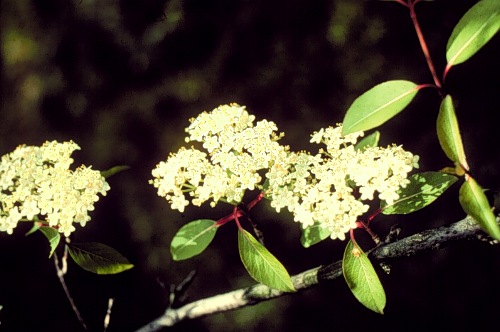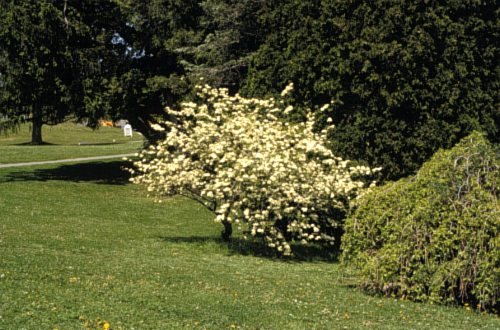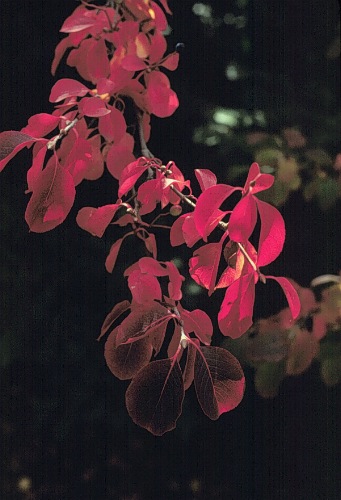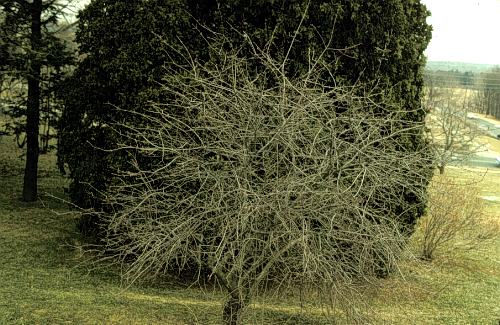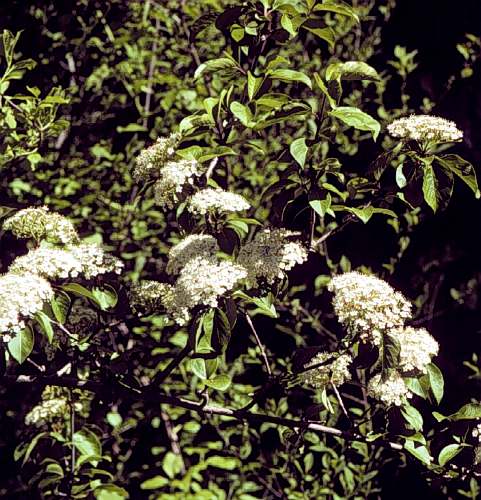Viburnum prunifolium
Blackhaw Viburnum
Caprifoliaceae
ExpandHabitat
- native to Connecticut down through Florida and across to Texas
- cold hardy to zone 3
Habit and Form
- a medium-sized deciduous shrub
- rounded crown
- stiff branches
- up to 15' tall
- 8' to 12' wide
- medium texture
- slow growth rate
Summer Foliage
- deciduous simple leaves
- opposite leaf arrangement
- very small serrations along leaf margins
- 1.5" to 3.5" long
- up to 2" wide
- dark green leaf color
Autumn Foliage
- purplish fall color
- variable
Flowers
- white flowers
- individual flowers 0.25" across
- flat-topped clusters are 2" to 4" across
- showy
Fruit
- pink maturing to black
- drupe
- oval shape
- matures in early fall
- edible
- showy
Bark
- glabrous stems
- gray-brown bark color
- apple-like
Culture
- very easy to grow
- full sun to partial shade
- soil adaptable
- easily transplanted
Landscape Use
- screen
- specimen
- mass plantings and groupings
- to attract birds
- for flowering effect
Liabilities
- free from serious problems
ID Features
- opposite leaves
- oval, black fruits in clusters
- upright stiff habit
- flat clusters of small creamy white flowers
- apple-like bark
Propagation
- by seed
Cultivars/Varieties
'Early Red' - Offered by a prominent New Jersey nursery, this selection is notable for its fine foliage display. The young leaves are tinged red, and the fall foliage is deep red. Other traits are as per the species.
'Ovazam' (Ovation™) - This is a new selection notable for its upright, columnar habit to 10' tall and perhaps half as wide. The young leaves have a reddish cast and dark blue berries follow the flat-topped flower clusters.
